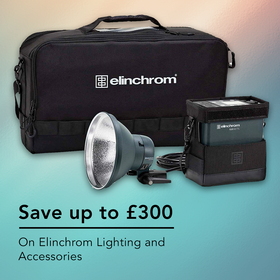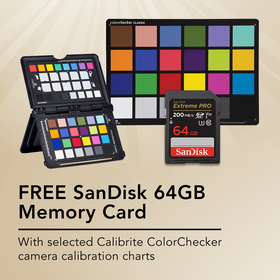Call Us: London / Leeds / Birmingham

Elinchrom D-Lite RX One Review by Steve Aves
Despite the fact that I’ve seen a lot of flash equipment over the years, I still get excited when I see something new. OK, the D-Lite RX One isn’t exactly new, but it is a new member of the D-Lite family and that’s good enough for me. I’ve had a few days to look and play with an Elinchrom D-Lite RX One/One Softbox To Go Set and I have to say I’ve been very surprised by its performance.
As I’m sure you know, the D-Lite RX family have been around for a while and have firmly established themselves as the starting point for pro’s, semi pro’s and enthusiasts alike. The reasons photographers like them is simple, the size and weight of the heads have always been key benefits, but it’s also their spec and their ease of use that have made them one of the most popular flash systems in the UK. Over the years Elinchrom haven’t sat on their hands, they have continued to develop and upgrade the D-Lite range and that leads us very neatly to the latest member of the D-Lite family, the D-Lite RX One.
The latest D-Lite, the RX One slots in neatly at the bottom of the existing range at just 100J in power. I say just 100J, but when you’ve read this review I hope you realize just how much you can achieve with that power. In the good old days most photographers thought that 500J was the minimum power you could get away with in the studio, believe me, times really have changed and now photographers are doing much, much more with much less power. Before I tell you about some of applications the RX One can shoot, let me tell you some facts about it.
To begin with, you can tell at a glance that the RX One is a D-Lite as it has that familiar and distinctive look. I mentioned the size and weight of the D-Lite’s and the RX One’s are seriously small and weigh less than kilo each. Having said that, the controls on the rear panel are familiar and generous in size and that’s good news, because I, like a lot of other photographers hate anything small and fiddly. The four white buttons, each with its own simple icon control the power, the slave cell, an audible beep and the modelling lamp. Each of those buttons can be programmed by simply pressing each button a certain number of times, getting you into each individual menu.
Starting with the power output, it covers a 5 stop range and can be adjusted from a minimum of just 6j, to full power at 100J in accurate tenths of a stop, or programmed in full or half stops if you prefer. The power is adjusted via an up and a down button, the setting shown in bright green on an LED display. The RX One also has ‘auto dump’, a system that dumps excess power automatically when the power is lowered.
The audible beep has up to 7 different settings to tell you when individual heads have recharged, although I’ve never used 7 heads in the studio, I’m sure it must sound like a flock of birds when they all go off! The slave cell, built into each head, can also be programmed for pre-flash's, ideal if working with Speedlights at the same time. The RX One uses Elinchrom’s familiar, bright 100w ES modelling lamp that actually gives an output of 150w and can also be set to min, max or proportional with the power, always a good idea visually. It can also be programmed to turn off when the head recycles giving the user a visual signal when to shoot.
There are also sockets for the mains lead and sync lead on the rear panel, plus a fuse holder. At the front end, everything is standard to the D-Lite, the bayonet accessory fitting, the ES lamp and the flash tube rated at 5500K daylight and the tube is user replaceable, a sensible idea.
The Skyport sync is another key benefit of the D-Lite system that has grown and developed with the whole Elinchrom range. For the photographer, it means a lot less hassle than using a sync lead to fire one head, the others, triggering via their slave cells, it also prevents other flashes from triggering your own lights. Each head has its own built in receiver and the Skyport hot shoe transmitter that triggers them is tiny. Apart from syncing the lights, the Skyport can also set the power of each head. There many ways it can be set, to fire an individual head or all the heads in the studio at once. The Skyport system can also control the lights via a computer, iPhone or iPad.
As I said before, the D-Lite’s can be used by any photographer, no matter what they shoot and that certainly applies to the RX One. That 100J power is perfect for so many applications in the studio whether it’s used as a fill or an effect light, or even as a main light source. You may think it far fetched to use a 100J head as a main light, but I hope I can make you think again.
Let me start by saying that to get the best out of any flash head, it’s a good idea to use it at full power, why, because you achieve the best possible spec, that means the quickest flash duration and the perfect 5500K colour temperature. If you turn the power down, some heads will lose a little bit of both of those key measurements and that can be a bad thing. For those of you who already use flash, ask yourself this question, do I ever shoot at full power? I bet the answer is, not very often.
With that in mind, shooting with the RX One at full power offers the user a great spec, you’ll get an action stopping flash duration of 2200th of a second and that daylight colour temperature of 5500K. To add even more versatility to the RX One, photographers can use it with a higher ISO. This can now be done safely because most DSLR’s are relatively noise free at those higher ISO’s, so shooting at 400, 600 or even 800 ISO is possible and using those options can so easily turn the RX One into a main light source with small apertures. For those of you who don’t want to shoot at higher ISO’s, look at the D-Lite 200 or 400, simple!
For me though, the joy of using the power of the RX One lends itself ideally to low-key photography and nothing gives me greater pleasure than using a Snoot & Grid to paint with light and shade, ‘chiaroscuro’ is the perfect description. Whether shooting portraits or still life, don’t forget that the RX One will go down to a that very usable 6j output at its bottom end, so don’t forget all the advantages to be had from those very wide aperture shots!
To shoot low-key work, I would strongly recommend anyone buying an RX One kit to invest in a Snoot or Grid reflector and set of honeycomb grids. The honeycombs are best and will give you total control and give you those small pools of light to play with. It’s almost like using stage lighting and being able to create wonderful effects, especially if you shoot in black and white.
Anyway, before I get carried away, what I’m trying to say about the RX One is, don’t underestimate its worth either at its top end of 100j or its bottom end at 6j, as I’ve suggested, both have incredible possibilities. As for applications, if you want to shoot babies, portraits, hair and beauty, still life work, web work, the RX One is for you. If you already use flash and want to add to your existing kit, the RX One is also for you.
Buying a kit is always the best place to start and the RX One is available with 2 heads and a choice either with brollies or softboxes. Kits also come with stands, leads and a Skyport cordless system. Each kit comes packed in two very small, lightweight bags, one padded for the heads, Skyport and leads, the accessories and stands in the other bag. The whole kit only weighs 10kg and is incredibly compact and will be easy to carry or transport in the car.
The other accessories in the kit are also worth a mention, the stands are chunky and feel well made with quick release clips that make them easy to extend. The brollies are also nice quality and the 66cm square softboxes can be used with or without the front diffuser. It’s also worth mentioning that the boxes were very easy to assemble thanks to the clever design of the speed ring. Not an easy thing to explain in detail here, but when you read the instructions you’ll know exactly what I mean!
Since their introduction, the D-Lites have always offered the user exceptional value for money and the RX One’s are no exception. Altogether the RX One is a nice looking package for the beginner or for the more advanced user and that’s because of the RX One’s versatile power and the accessories that come with it.
There’s no doubt that Elinchrom have given a great deal of thought to the RX One, its specification and its position within the D-Lite range. There are so many advantages of low power that allow one to shoot at shallow depths of field and still achieve outstanding performance. I agree that introducing a new model below the D-Lite 200 makes absolute sense as it can be used by anyone, be they pro or enthusiast.
For those of you wanting to buy your first kit, I don’t think that you can really go wrong with the RX One. You’ll get a great deal for your money and you will be buying into Elinchrom, one of the best ranges of lighting on the market today.
I said how surprised I was by the performance of the RX One and if I had to sum it up in one phrase, I would say it’s a little gem!
PS. I’ve already mentioned some accessories that will add value to the RX One and give you even more versatility, always a good long-term plan. To build up your kit so that you will be able to tackle pretty much anything that comes up. The bits and pieces that come with each kit are fine and will do a good job lighting largish areas. This is just a reminder to look also at the Snoot and Grid and the Reflector & 30 Degree Grid set, including honeycombs that will give you those lovely controllable pools of light I mentioned. If you buy the softbox kit, I would also consider adding the 4-Piece Deflector Set that modifies the output and converts the box into a square beauty dish.
Steve Aves



